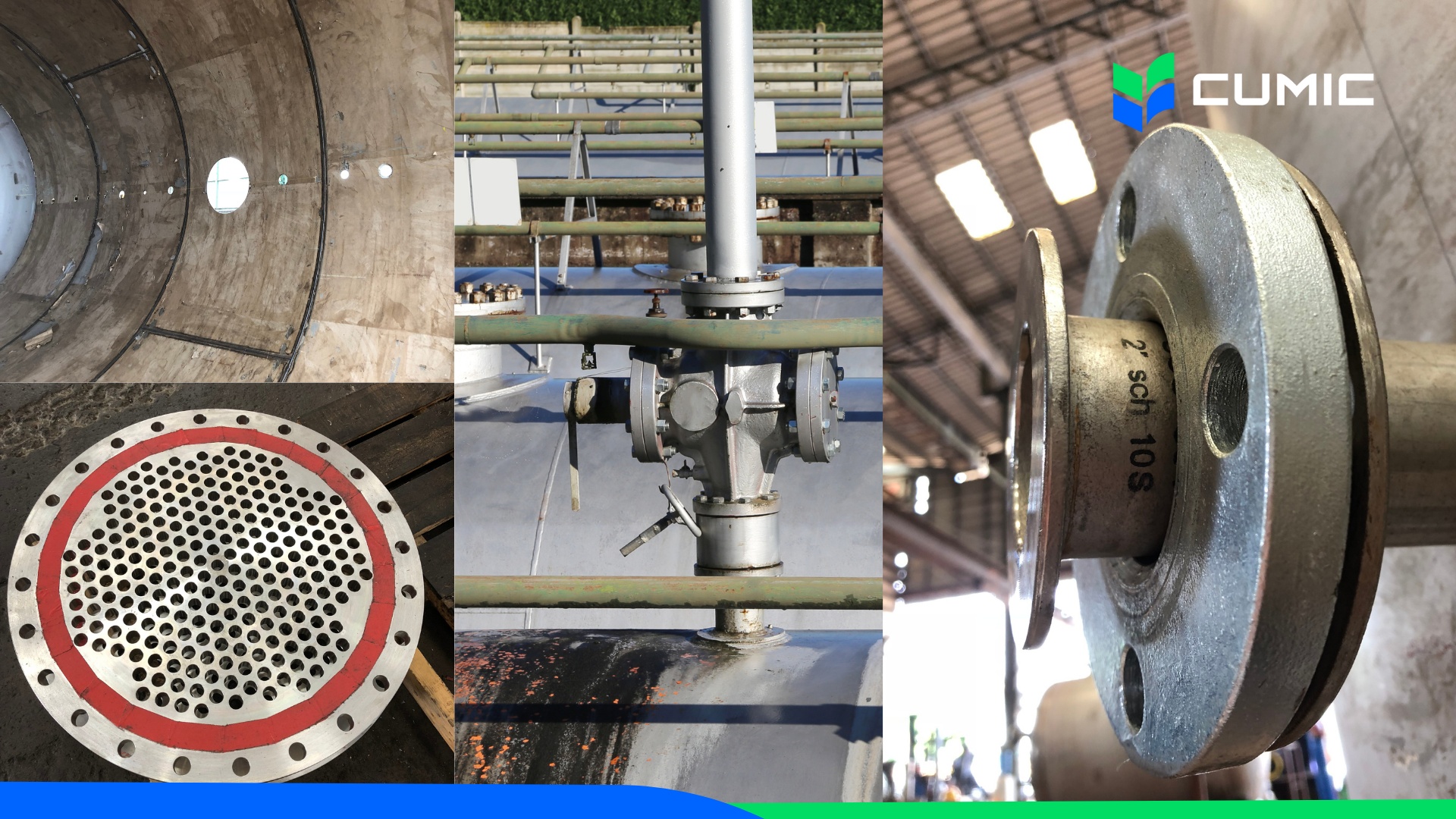压力容器的历史可以追溯到工业革命时期。早期,压力容器是用铁建造的,但19世纪高强度钢的发展彻底改变了它们的设计,使容器能够以更高的安全性和效率处理更高的压力。在蒸汽时代,压力容器在为火车,工厂和轮船中使用的蒸汽机提供动力方面发挥了至关重要的作用。
为压力容器选择合适的钢材至关重要。正确的材料不仅确保容器能够承受高压和抗腐蚀,而且还保持了设备的整体安全性和耐用性。使用合适的钢材可以延长船舶的使用寿命,降低维护成本,并防止操作中断。
接下来,我们将重点介绍当今压力容器制造中最常用的钢材类型,借鉴CUMIC在压力容器用钢供应方面的丰富经验。
压力容器钢通常根据其化学成分进行分类,这影响了其性能和对不同操作条件的适用性。通过了解化学元素及其对材料性能的影响,工程师可以根据温度,压力和暴露于腐蚀性元素等因素选择最佳选择。
碳钢: 主要由铁和碳以及少量其他元素 (如锰和硅) 组成,碳钢因其强度和成本效益的平衡而被广泛使用。然而,它缺乏显著的耐腐蚀性,这限制了它在某些环境中的使用。

低合金钢:这些钢含有少量 (通常为1-5%) 的合金元素,例如铬 (Cr),钼 (Mo) 和镍 (Ni)。这些元素提高了强度、韧性、耐高温性和耐腐蚀性。以下是这些元素的贡献:
铬 (Cr): 提高强度和硬度。
钼 (Mo): 提高高温强度和耐腐蚀性。
镍 (Ni): 增加韧性和耐低温性。

不锈钢:这些钢的特征在于添加至少10.5% 的铬 (Cr),其形成抗腐蚀的保护性氧化物层。一些不锈钢还含有镍 (Ni) 、锰 (Mn) 和钼 (Mo),以进一步提高耐腐蚀性、强度和可焊性。常见的不锈钢类型包括:
奥氏体不锈钢 (含有铬和镍,如304、316)。
铁素体和马氏体不锈钢 (主要是铬基,镍较少,如410)。

用于压力容器的钢产品的类型取决于其设计和具体应用。以下是压力容器制造中使用的三种最常见的钢产品,根据结构需求,压力要求和操作条件进行选择。
钢板
钢板主要用于压力容器中的壳体、封头和其他扁平结构等部件。它们必须通过切割、轧制、焊接和热处理来加工。关键要求包括高强度,良好的塑性,韧性以及出色的冷弯和焊接性能。这些品质确保钢板能够处理压力容器经历的显著压力和应力。
钢管
钢管通常用于压力容器内的连接和热交换器管。无论是从无缝钢管还是轧制钢管,它们都经历与钢板类似的切割,焊接和热处理工艺。高强度、良好的塑性和可焊性对于确保管道的耐久性和可靠性至关重要。
钢锻件
锻件用于高压部件,如压力容器中的盖、端盖、法兰和管法兰。这些组件有四个等级 (I,II,III,IV),higher等级需要更广泛的测试,更严格的标准和相应更高的成本。它们的强度和安全标准对于承受容器内的高压至关重要。

随着压力容器制造的发展,对高强度合金和复合材料等先进材料的需求不断增加。这些材料提供更好的强度重量比和增强的耐腐蚀性,使其成为具有挑战性的环境的理想选择,例如化学加工和石化行业。
在CUMIC,我们致力于提供最高水平的客户满意度。凭借超过18年的经验,我们支持我们的客户成功完成他们的压力容器项目。立即联系我们cumic@cumic.com获取个性化报价,并在LinkedIn和Facebook上与我们保持联系,以获取我们产品和服务的最新更新。